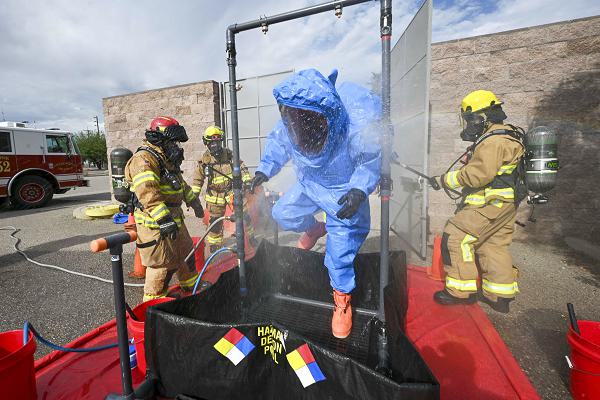
Davis-Monthan Air Force Base, Arizona. (September 5, 2024): It is an ugly fact of life that America’s enemies will not hesitate to use chemical, biological, or even nuclear weapons against our troops. In this photo by Staff Sergeant Christina Russo, Senior Airman Ronald Cataldom is being decontaminated during a simulated chemical, biological, radiological, and nuclear attack. The exercise was made more real by “exposing subjects to an unidentified substance” requiring Airmen to set up a decontamination zone to treat the “victims” quickly and effectively.
Decontamination is the cleaning process conducted to prevent a wounded person contaminated with chemical, biological, or nuclear agents from infecting other wounded troops or the personnel who intervene. In general, decontamination is divided into three types: mechanical, physical, and chemical.
Nuclear agents are materials released by nuclear fission or through the release of other radioactive material, often called dirty bombs, which has the potential to affect human health. The procedure in the event of radiological attack requires two decontamination cycles with a radiation survey after each cycle. Warm water and a neutral soap are mixed to create an emulsifying fluid that dissolves the contamination while also directing the water away from the patient.
Biological agents are formulated to cause infection or disease, and these hazards include epidemics, animal plagues, and insect infestations. Treatment for bio-hazards involves using alcohols, chlorine dioxide, and hydrogen peroxide to kill infectious organisms.
Chemical hazards, such as nerve gas or blistering agents, are counteracted by wiping the patient down with common household bleach and other ammonium-based disinfectants. This is typically done in three phases, initial cleaning, disinfecting, and sterilization of toxic materials.
Despite international treaties prohibiting their use, America must nevertheless be ready to react effectively to such attacks to save lives.


